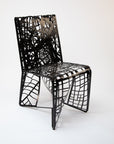
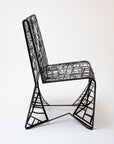
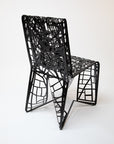
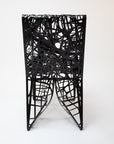
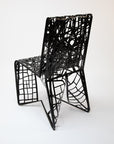
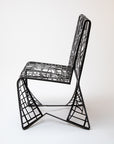
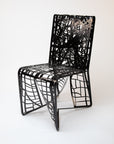
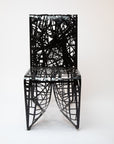

Aluminum Chair, Harvard Square - Prototype (Paccar Black)
This is a one-of-a-kind early prototype. Prototypes are sold as-is and have imperfections from testing and display. They are not guaranteed to withstand regular use and are sold to be displayed as art.
This Aluminum Chair prototype features four maps showcasing how Harvard Square in Cambridge, MA has evolved over the past 350+ years. This is one of the first full prototypes, and represents the location of Harvard University, which commissioned Ted Galante to create seating for Harvard Square, inspiring the development of this collection. This prototype is finished in Paccar Black.
Material: Aluminum
Dimensions: 18½in L x 18in W x 36¾in H
Weight: 13lbs
Color: Paccar Black
Prototypes are one-of-a-kind pieces that were handcrafted during our earliest days of design development. They are truly unique, fine art objects that can be shipped to your desired location upon ordering. Your lead time will be determined upon finalizing logistics.
Made From Four Layers of Historical Maps
OCCUPYING OVER 350 YEARS OF HARVARD SQUARE HISTORY
Top Layer
2023
Harvard Square is a center of history, academia, and commerce, shaped by technological and societal shifts.
Harvard leads research in AI, climate science, and public policy. Urban development balances historic preservation with modern infrastructure as businesses adapt to post-pandemic realities. Student activism focuses on global conflicts, climate change, and social justice, reflecting broader national debates.
The square continues to embody the coexistence of tradition and innovation, preserving its intellectual heritage while adapting to contemporary challenges.
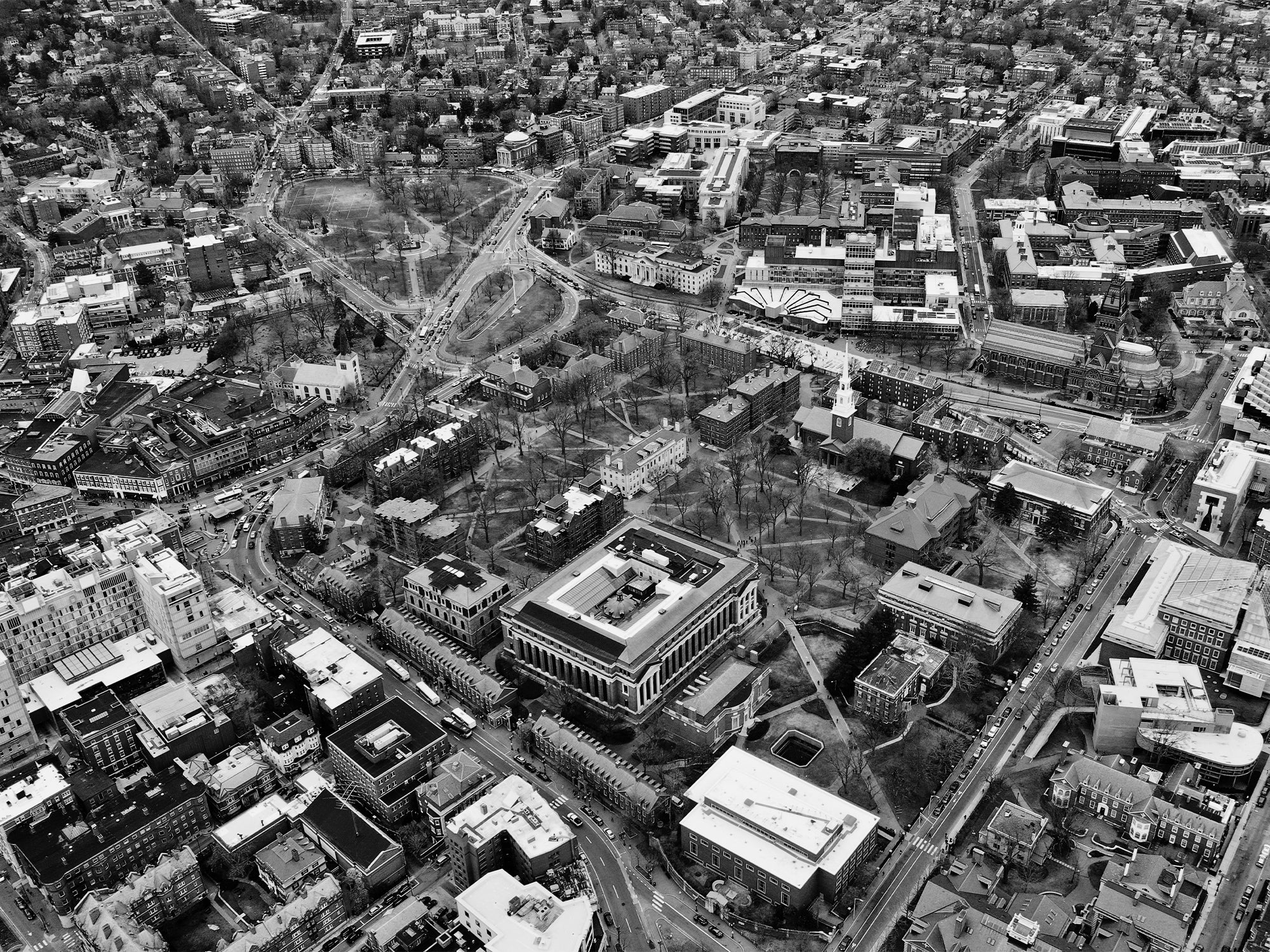
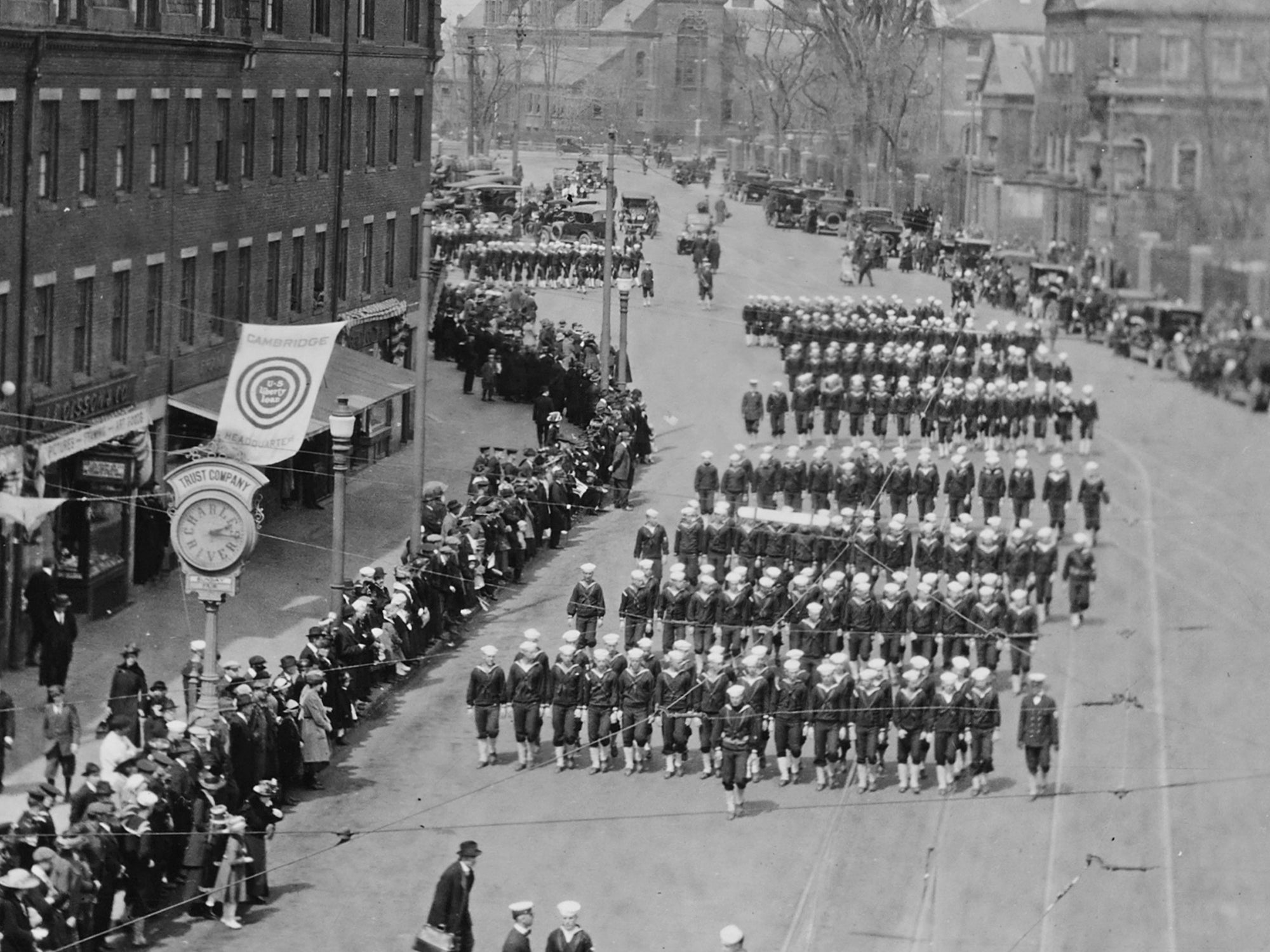
Second Layer
1914
Harvard Square thrives as an academic and cultural hub while World War I erupts in Europe. Harvard students and faculty closely follow events, some volunteering for ambulance corps or advocating for U.S. preparedness.
The square bustles with horse-drawn carriages and early automobiles, while shops, bookstores, and cafés cater to a growing student body. Political debates over intervention and isolationism intensify in lecture halls and editorials.
Though the U.S. remained neutral until 1917, the square reflects a nation on the verge of transformation, caught between tradition and an impending global conflict.
Third Layer
1776
Harvard Square stands at the heart of revolutionary Cambridge as the colonies declare independence.
A year earlier, General George Washington took command of the Continental Army in Cambridge Common, using Harvard buildings as barracks. The square is a hub of political debate, where patriots discuss self-governance and scholars shape revolutionary thought. War disrupts commerce as loyalists flee and supply lines fluctuate under British blockades.
With the Declaration of Independence signed, Harvard Square is deeply embedded in the revolutionary cause, symbolizing the intersection of education, governance, and the birth of a new republic.
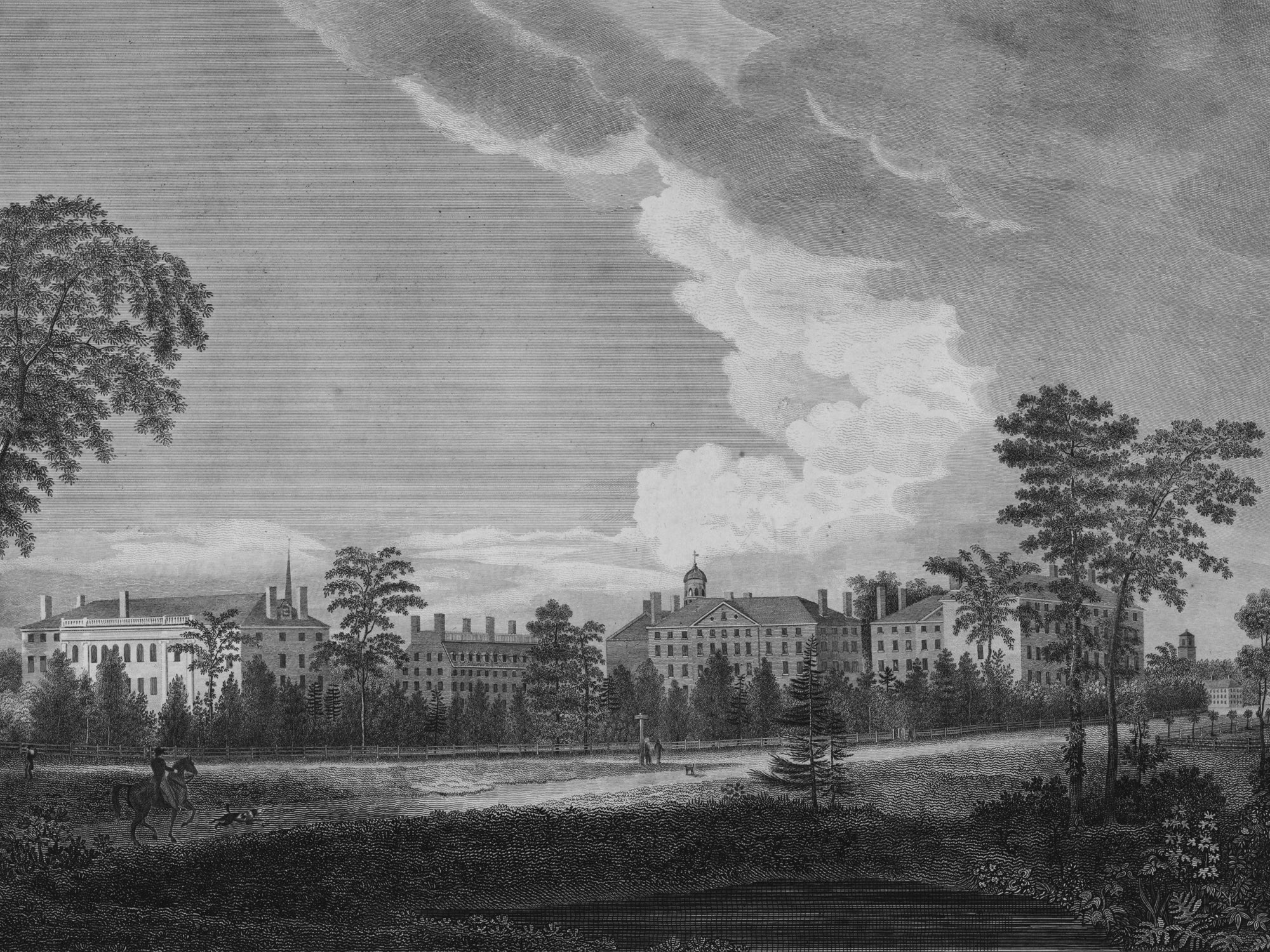
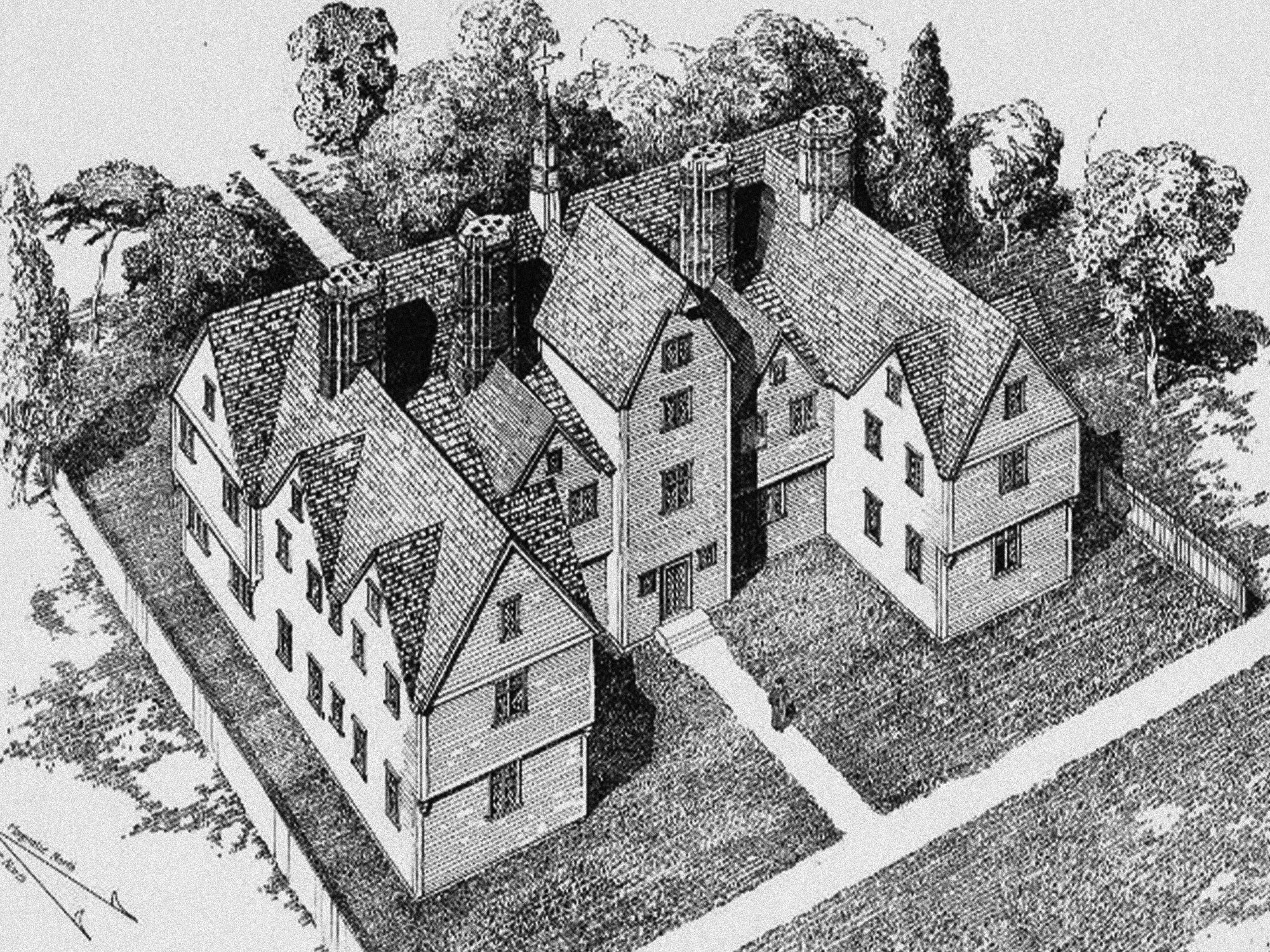
Bottom Layer
1636
Harvard College is established, shaping the intellectual and religious life of the Massachusetts Bay Colony. Established by the General Court, it educates Puritan ministers and civic leaders, reinforcing New England’s theocratic structure.
The square consists of wooden buildings, fields, and pathways, serving as the center of Newtowne (later Cambridge). English settlers control governance, land, and trade, often clashing with indigenous peoples.
As one of North America’s first higher learning institutions, Harvard signals the colony’s commitment to scholarship, scripture, and structured governance, laying the foundation for the area’s future intellectual prominence.











